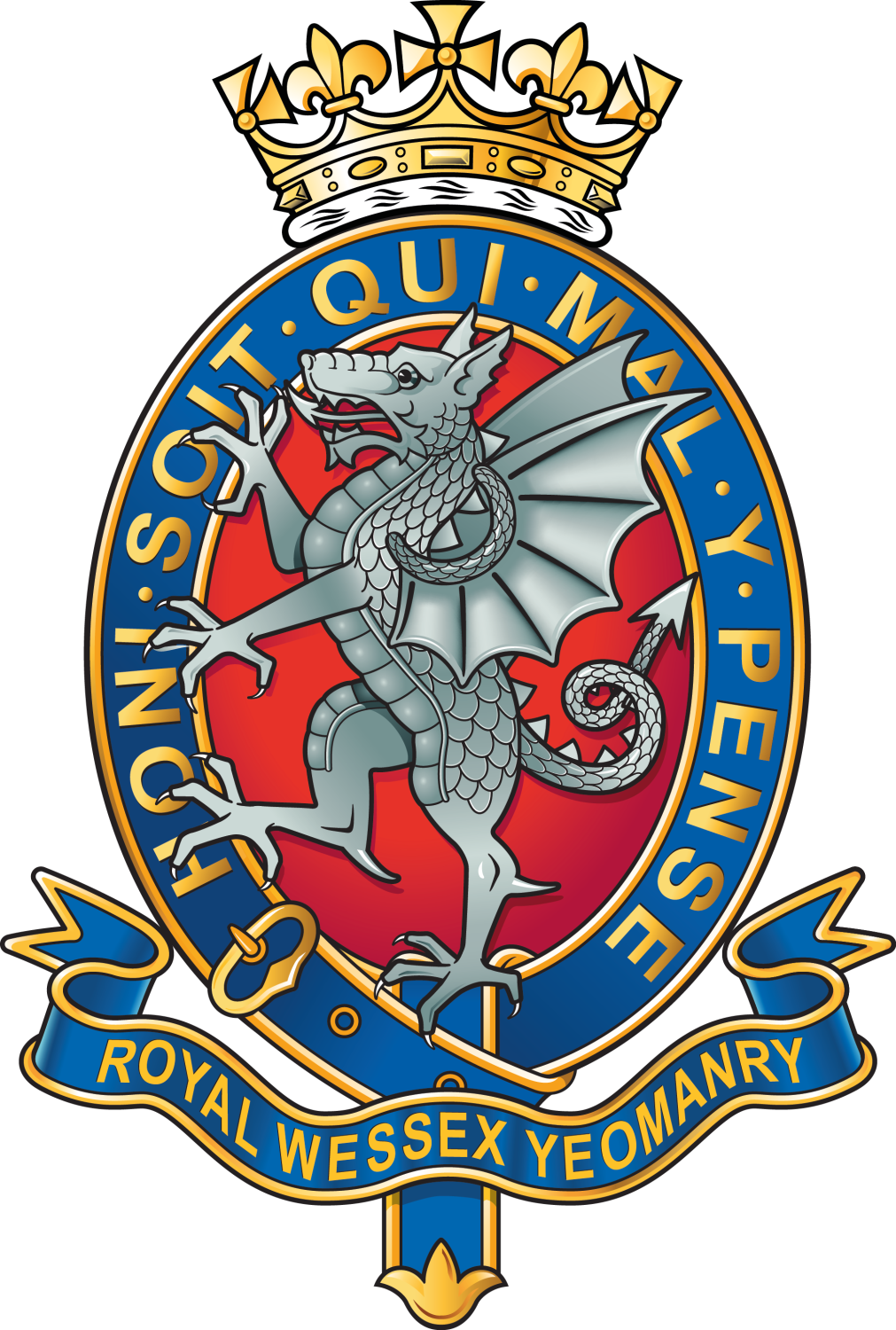History of the Royal Gloucestershire Hussars

The ‘Portcullis’ cap badge of the Royal Gloucestershire Hussars, styled after the crest of the Duke of Beaufort.
C (RGH) Sqn is the surviving element of the Royal Gloucestershire Hussars (RGH) who had their RHQ in Cirencester, and troops spread across Gloucestershire.
1795 – 1914: With the imminent threat of invasion by French forces the first Troop of the Royal Gloucestershire Hussars was raised in Cheltenham with more being raised including in Gloucester, Tetbury, Fairford, Cirencester, Stroud, Dodington and Bristol. In 1834 the Troops were amalgamated and the 6th Duke of Beaufort was appointed as Commanding Officer, which began a close association with the family which has continued to this day. Queen Victoria granted the Regiment the title of ‘Royal’ in 1841 and was restyled the Royal Gloucestershire Hussars in 1847. In 1900 a Squadron of the RGH joined the Imperial Yeomanry and took part in the Boer War. The RGHIY cap badge and title was adopted by the Regiment until 1908 when Haldane’s Reforms created the new Territorial Force.
The Great War: The RGH mobilised in August 1914 and was deployed to Alexandria in 1915 with their horses before being sent on to Gallipoli to operate as Infantry. On returning to Egypt they suffered losses at Katia in the Sinai Desert but showed their expertise at the Battle of Romani. The RGH were a key element in the subsequent advance on Jerusalem, Damascus and Aleppo. The RGH finally returned to the UK in August 1919. In 1922 the RGH War Memorial was built at Gloucester Cathedral to commemorate the Regiment’s losses during the Great War. After the war, the RGH was reduced to an Armoured Car Company of the Royal Tank Corps.
World War 2: In the lead up to war the RGH once again raised Troops and the Regiment paraded over 1000 men at Tidworth in 1939. The Regiment was divided into 1RGH and 2RGH. 1RGH became a training regiment, training over 5,000 British troops during the war. 2RGH deployed to Libya in 1941, as part of the 7th Armoured Division (The ‘Desert Rats’).
Crewing fast but lightly armed and armoured Crusader tanks, 2RGH took the lead at the battle of Bir El Gubi in November 1941. However, they were outnumbered and suffered heavy losses, despite the bravery of their troops; the commanding officer was wounded when his tank was destroyed beneath him but continued to direct the Regiment’s fire, and another crew worked through the night under direct German fire to repair and bring home their stricken Crusader.

Image: 2RGH Crusader tank drives past a destroyed German tank in the North African desert.
2RGH were subsequently re-equipped with Grant and Stuart tanks in early 1942 and won a further battle honour in the Battle of Gazala. Again they suffered heavy losses, with their new tanks outgunned by the German Africa Corps. As a result, they were taken out of the front line and acted as a patrol and reconnaissance squadron for 22nd Armoured Brigade.
2RGH soldiers and tanks went on to fight in the Battle of El Alamein, attached to numerous different units. By this point, the regiment’s numbers were greatly reduced by the fighting and so the three surviving squadrons were attached permanently to the 4th Hussars, 8th Hussars and the Royal Wiltshire Yeomanry.

Image: A ‘Grant’ tank of A Sqn, 2RGH, 1942.
1945 to 1967 The RGH became an Armoured Car Regiment with Squadrons in Gloucester, Cirencester, Tetbury, Cheltenham and Bristol. In 1962 the RGH was presented with a new Guidon at Badminton House by the Duke of Beaufort on behalf of Her Majesty the Queen. In 1967 the Prime Minister disbanded the Territorial Army and the RGH was reduced to a Cadre.
1971 to date In 1971 the Territorial Army was re-established. The Royal Wessex Yeomanry (RWxY) was formed under command of Colonel Tom Ponsonby and the RGH raised three Squadrons and the RGH Band alongside Squadrons based in Wiltshire (RWY) and Devon (RDY). In 1990 the long history of the RGH was highlighted by the opening of the Soldiers of Gloucestershire Museum in Gloucester Docks. In 2000 Pate’s Grammar School CCF adopted the RGH cap badge. From 2003 members of Squadron supported regular units on Operations in Iraq and Afghanistan in a variety of roles. Today the Reservists of C (RGH) Squadron of the RWxY train as Challenger 2 tank crews, and they continue to provide support to regular Royal Armoured Corps Regiments on both exercise and operations.
